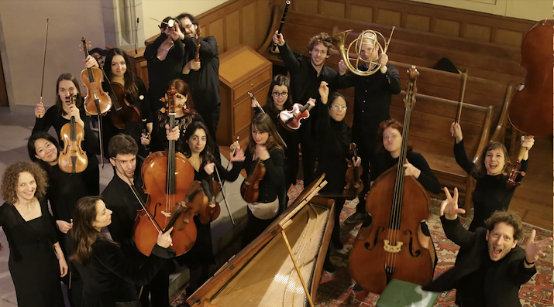Bohemian discoveries
The Camerata Rousseau performs concertos for bassoon and oboe as well as a symphony by Jan Anton and Leopold Kozeluch, although the attribution of the works to the two cousins is not always clear.

.
The fact that the two cousins were given the same first name Jan Anton by their parents was not a good idea in hindsight: both showed a talent for music and especially for composition, which was bound to lead to confusion. Born nine years later, he decided as a young man to take the name Leopold. The two Kozeluch brothers were among the most renowned Bohemian composers in the second half of the 18th century and beyond. After his apprenticeship at home, Jan Anton continued his training in Vienna with Gassmann, Gluck and Hasse and later made a name for himself in Prague, particularly as a composer of sacred vocal works.
Leopold - after studying with his cousin and Duschek - also perfected his talent in Vienna, where he was probably taught by Albrechtsberger. He soon enjoyed resounding success as a piano virtuoso, music teacher and composer. He ignored the offer to become Mozart's successor as court organist in Salzburg. In 1792, he became "Kammer Kapellmeister und Hofmusik Compositor" at the imperial court in Vienna, a position he held until his death in 1818. It is known that he made disparaging remarks about Haydn, and it is also known that he was heavily criticized by Mozart and Beethoven. Despite these personal animosities, which are rather amusing today, it is undisputed that he had a decisive influence on the style of Viennese Classicism. However, large parts of his huge oeuvre have yet to be rediscovered.
The CD combines a bassoon and an oboe concerto by Jan Anton and a symphony by Leopold Kozeluch as well as a world premiere recording of another bassoon concerto, which is attributed to both Leopold and his cousin (although the confusion surrounding the names is also reflected on the cover). The two bassoon concertos, which are quite different, are attractive works in which the soloist Sergio Azzolini can demonstrate all facets of his ability on an original instrument from around 1794: expressive musical speech, cantabile melodic arcs and technical brilliance. The same can also be said of the oboe concerto in F major with the outstanding soloist Giovanni De Angeli. Leopold Kozeluch's three-movement G minor Symphony, composed around 1787, is, like the better-known works in this key by Mozart, Haydn or Vanhal, a highly expressive, dramatic piece with bold harmonies and exciting dynamic contrasts, which was immediately played throughout Europe.
It is to the credit of the Camerata Rousseau and its conductor Leonardo Muzii to present these four works, which were recorded in 2016, in the best possible light on a new CD. The orchestra plays with commitment, beauty of sound, differentiation and precision. Its name refers to the famous Genevan philosopher, poet and composer and recalls that musicians from the Early Music Department of the Geneva Conservatoire founded it to perform 18th and 19th century compositions in the proper style. It has since moved to Basel, and graduates of the Schola Cantorum Basiliensis also take part. Karl Böhmer's well-founded booklet text, which contains everything worth knowing about the two composers and their works, deserves special mention.
Jan Anton Kozeluch (1738-1814) and Leopold Kozeluch (1747-1818): Concertos and Symphony. Sergio Azzolini, bassoon; Giovanni De Angeli, oboe; Camerata Rousseau on period instruments; conductor Leonardo Muzii. Sony classical 19439788202








